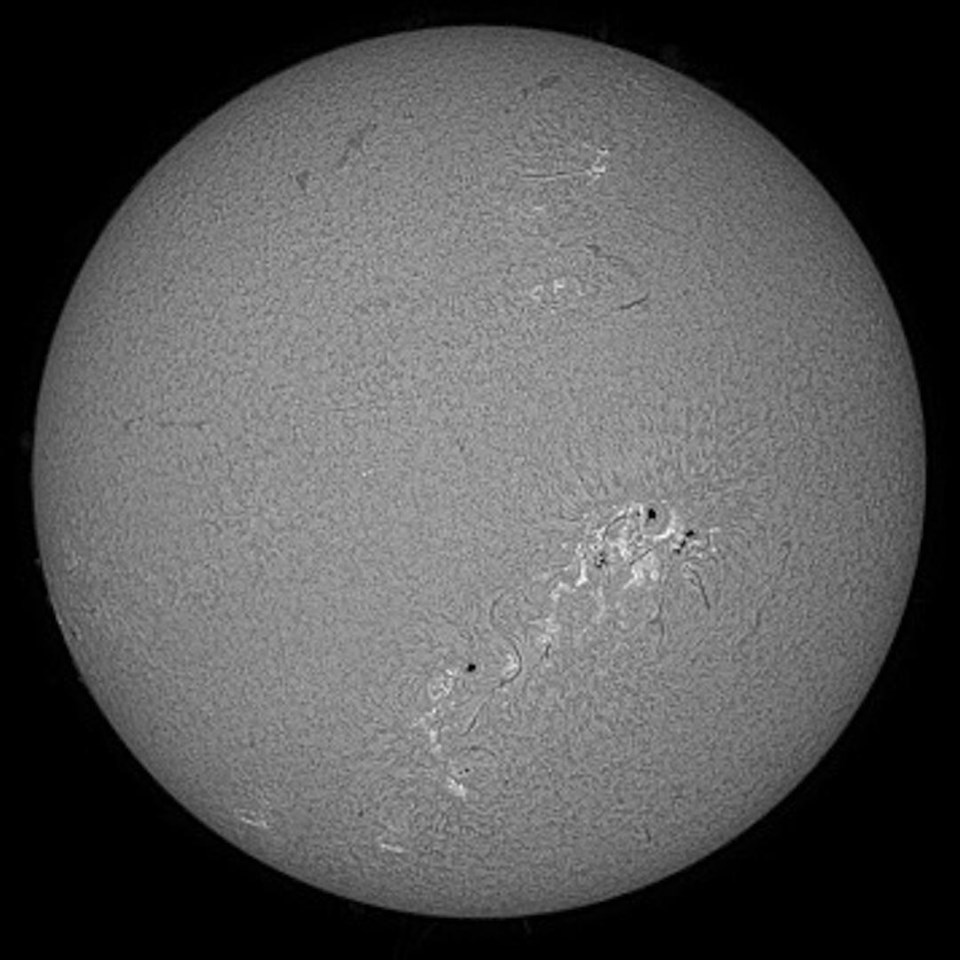First, we get to see the latter part of a lunar eclipse on May 15. The eclipsed moon will rise at 20:52 in the ESE and climb to about 7 degrees above the SE horizon by 21:55 at which time the moon will begin to exit the umbra – the total shadow cone of the Earth. Remember, while the moon moves up and right as the Earth turns it actually moves down and left relative to the stars, so the sunlight begins to hit the lower left edge of the moon. Just after sunrise on April 30 and May 1 there is a close conjunction of Venus and Jupiter in the SE and Mercury is visible in the west after sunset, 12 degrees above the horizon and above a very thin new moon. Venus, Jupiter, Mars and Saturn will all move in the same line of the ecliptic over the course of the month.
On a separate matter, on the afternoon of April 22, I inadvertently confirmed Sir Isaac Newton’s theory of gravitation by stepping on a wet patch after cleaning my vinyl deck. Post-impact, I confirmed: first, he was right; second, gravity is not always my friend and, lastly, I was lucky to just tear one of my quadriceps instead of breaking a hip. It occurred to me that life imitates nature: like our sun, my luminance will eventually decrease and, as my equatorial radius expands to approach my polar radius, I will slowly decay into a white dwarf.
That grim analogy aside, despite being one of the weaker forces in the universe, gravity nonetheless rules over immense distances and its effects are visible almost everywhere you look. Check out Barringer crater on Google Earth; that’s the result of a 30 metre iron meteorite hitting at a bit over 11 km/sec about 50,000 years ago. One comment I read was that the most amazing thing about it was how close to the visitor centre it landed.
My April 2021 article covered the current theory of the formation of our own moon, namely, that in the very early solar system, the proto-Earth was struck obliquely by something about the size of current Mars and that the impact accelerated Earth’s rotation and left a coalescing ring of debris that formed our moon and slowly migrated outwards because of Earth-moon tidal interactions. Our moon is far larger in comparison to its planet than any other moon in the solar system and, in some ways, we behave like a binary planetary system. As well, lacking an atmosphere, our moon has been a target of some spectacular bombardments over its lifetime; some of the more dramatic craters and impact basins were the subject of last month’s article.
Another obvious example of gravity’s effects is seen on Mars with its axial tilt of over 25 degrees and the immense Hellas impact basin 2,300 km across. Like Earth, Mars rotates in about 24 hours; Venus and Mercury barely rotate at all. Aside from Jupiter, which rotates only 3 degrees inclined to its orbital plane, the other gas giants are all quite inclined to their orbital planes, with Uranus having a huge 97 degree tilt. Its north pole (relative to its rotation) actually points to the south side of the solar system. I’m still having trouble visualising what path the sun would take through the sky over Uranus’ 87 year orbit, but its severe tilt is almost certainly due to an early impact by something perhaps the size of our Earth.
For information of the Astronomy Club’s next meeting – Zoom or in person – on May 13 please check out the club website at: sunshinecoastastronomy.wordpress.com/, which will have information on the speaker and topic and how to register for the meeting the week prior.





